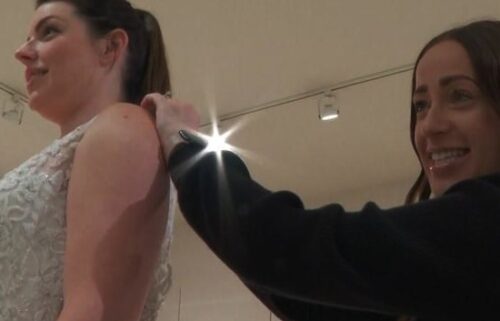“It feels hopeful”: Family of toddler with ultra-rare disease sees signs treatment may work
By LOUISA MOLLER
Click here for updates on this story
BOSTON (WBZ) — Mary Saladino is used to risks and uncertainty. Her three-year-old son, Henry, has a rare neurological disease called Alternating Hemiplegia of Childhood or AHC which can cause seizures and paralysis that threaten to kill him or damage his brain at any moment.
“This disease is cruel, it’s brutal, and it can take Henry at any moment without warning,” Mary said.
When WBZ first met them in 2022, a treatment for Henry was a dream that the family embarked on alone. Henry’s disease is so rare that no pharmaceutical company will take on the risk and multi-million-dollar tab associated with a potential treatment.
Mary and her husband Anthony spent tireless hours tracking down labs, championing their son’s cause, and fundraising. They estimate that if a successful treatment works for Henry, it could cost $3 million in total to develop and manufacture.
Now, they’re seeing their hard work pay off with a therapy called an antisense oligonucleotide or ASO.
“We believed in this treatment from day one but to see that it’s working, objectively, scientifically, in a lab feels validating. It feels hopeful,” Mary said.
Scientists at the Northwestern Feinberg School of Medicine are producing ASOs candidates, microscopic synthetic strands of DNA and/or RNA that bind to the genetic mutation that is producing the protein causing Henry’s disease.
Right now, there are four leading ASO candidates that researchers say are destroying some of the mutant gene in Henry’s cells.
“An ASO can be used to selectively target that messenger RNA for destruction so that the mutant protein is never made or is at least made in less abundance,” said lead researcher Dr. Al George, “We have some that are promising. I would say they’re not quite where I would like to see them.”
Next, Dr. George will send the ASO’s to be tested for toxicity in rodents. The project could live or die at this stage. If the ASO’s are toxic in rodents, they are not safe enough to be used on Henry.
“Because if they’re toxic, that’s the end of the line for those and we’ll move onto others,” George said.
Mary will not let herself focus on this risk. Instead, the Saladino family is going full steam ahead with a fundraising campaign to raise the remaining more than $1.5 million needed.
“So, we’re about to get into the two most expensive stages of any drug development which are toxicology and manufacturing so it’s safe to go into Henry. Those two stages combined cost $2 million,” she said.
At the same time, Mary says her boy continues to defy the odds and show more bravery than he may ever realize.
“To watch him pretty much learn potty training as if it were no big deal and take steps and learn how to pedal a bike and continue to talk and to do it as if he has not had to struggle or like he does not have this life-threatening condition is just incredible,” Mary said.
For more information on Henry’s story, visit forhenryahc.org
Please note: This content carries a strict local market embargo. If you share the same market as the contributor of this article, you may not use it on any platform.

